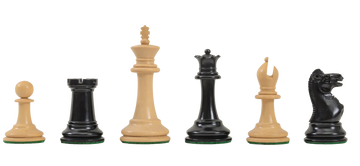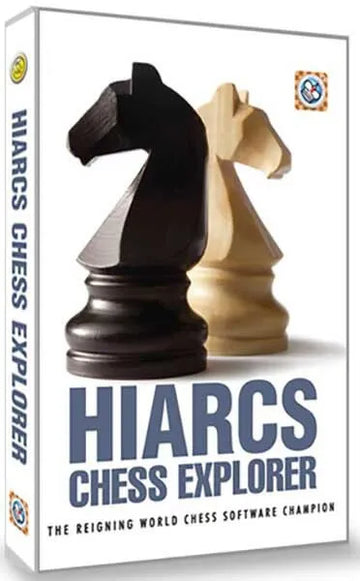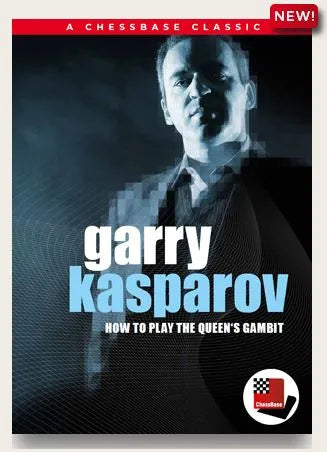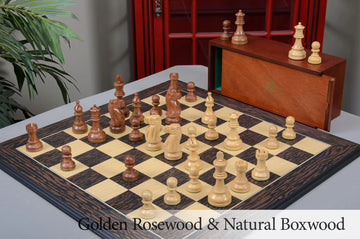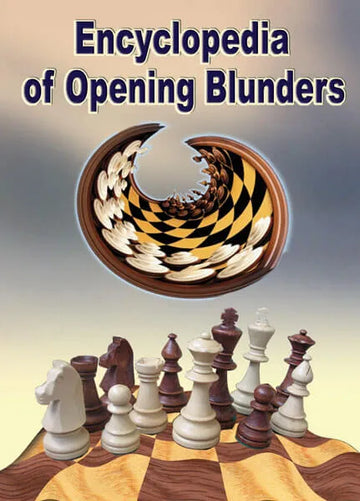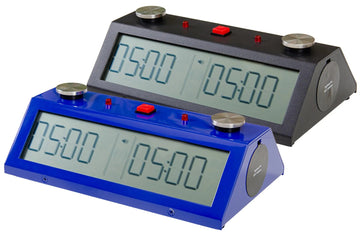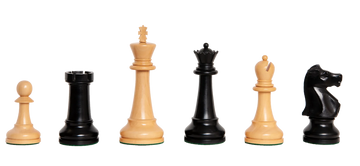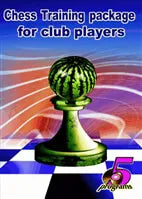Which Is The Worst Chess Blunder In History?
Chess blunders are a familiar part of chess that every player, from beginners to grandmasters, experiences. However, there are some blunders so catastrophic and unexpected that they become a part of chess history.
Let’s explore some contenders for the worst chess blunder in history and see how the greatest chess players make the worst mistakes from time to time.

What is a Chess Blunder?
In chess, a blunder is a serious mistake that gives your opponent a significant advantage. Various types of bad moves can be blunders. For example, giving up materials by neglecting to defend a piece, or hanging a checkmate by failing to address a threat to your king.
Beyond a minor mistake or inaccuracy, blunders are errors that you should be able to avoid if you’re paying attention. Nevertheless, every chess player blunders.
Throughout history, the greatest players of all time missed obvious checkmates, given away their queens for nothing, and miscalculated combinations. Sometimes, they do this when everything is on the line.
Related: Beginner Mistakes When Learning Chess
Chess Blunders: The Greatest Hits
All of the blunders on this list are uniquely bad. From basic miscalculations in high-stakes situations to completely mystifying misses, these blunders showcase just how bad the best chess players can mess up.
David Bronstein Vs Mikhail Botvinnik - 1951
First off, we have a blunder played by David Bronstein in a World Championship match against Mikhail Botvinnik in 1951. Bronstein, the challenger and younger player, was leading the match, but made an enormous misstep in calculation that cost him the game and perhaps the championship.

In a relatively simple endgame, Bronstein was up a knight, facing a passed pawn, and had a certain draw. He played the move Kc2, and after a clever move from Botvinnik (Kg3), Black was in a winning position.
While not the most obvious blunder to a beginner or intermediate chess player, seeing the draw in the position would usually be child’s play for a grandmaster. For reasons unknown, Bronstein made the error, and the rest is history.
The match continued and was bitterly contested by Bronstein, but ultimately it ended in a draw. As such, Botvinnik retained the title, and Bronstein’s world champion hopes were shattered.
Miguel Najdorf Vs. Bobby Fischer - 1966
Miguel Najdorf is a legendary chess player, best known for the Najdorf Variation, which is still an extremely popular opening among grandmasters. Bobby Fischer, arguably the best chess calculator and player of all time, was not known for his blunders. When the two played in the 1966 Piatigorsky Cup, it was a heavyweight showdown, and big mistakes were not a natural expectation.
For a beginner, this blunder would be an easy one to make, but for Fischer, it was a bad reaction to a gradually losing position.

Here, he played Nd6, thinking the knight was protected by the queen. However, after the queen recaptures, Black is facing too many threats. Most pressingly, White can capture the bishop on b7, and the rook cannot defend it because the queen can play c8 with check.
Instead of playing out the loss, Fischer resigned. Here we have an example of how mounting pressure can lead to a simple slip.
Vladimir Kramnik Vs. Deep Fritz - 2006
In a less famous follow-up to the Deep Blue vs. Gary Kasparov match, Kramnik faced the chess computer Deep Fritz. It was a contest that he would eventually lose, and the most noteworthy moment of the match was this spectacular blunder.

In game two, he failed to defend against this obvious mate in one. Kramnik had played a masterful game from an unusual opening. As the game progressed, he lost the advantage, and it seemed the game would end in a draw. Instead, he played Qe3, trying to force a queen trade, but somehow failing to see Qe7# checkmate.
After the game, Kramnik couldn’t explain it. According to the post-game interview, he felt he was playing well, had calculated a proceeding line in great detail, but failed to spot this obvious threat. It was another high-profile example of extreme tunnel vision. On certain occasions, the chess blindness affliction affects even world-champion-level players.
Some blunders are bad because of the stakes of the game. This one was just an extraordinary miss by an extremely talented player. Though he has since been embroiled in chess cheating scandals, Kramnik was a world champion and an extraordinary chess player. Ignoring such an obvious threat to the king remains a mystery to players to this day.
Ding Liren Vs. Gukesh Dommaraju - 2024
Blundering is undoubtedly not a thing of the past when it comes to World Championship matches. In 2024, Ding Liren faced an 18-year-old Gukesh Dommaraju at the 2024 FIDE World Championship. Liren is known for his long thinking times in classical matches, but also for dazzling strategic play that won him the World Championship in 2023.
In round 11 of the match against Gukesh, he managed to get an advantage against an aggressive opening, but spent 40 minutes on his 4th move. After some middlegame inaccuracies, Gukesh was the one with an advantage. Eventually, under pressure, Liren made the following blunder. White can capture the knight with Qxc6; if cx7, the connected rooks capture the rook and the queen. Black, at best, simply loses a piece.

This was not the only blunder in the match. The win by Gukesh was finalized with another blunder from Liren in this position.
After an astonishing performance, Gukesh won the match and became the youngest ever chess world champion. How the game might have gone without Liren's blunders remains unknown.
Boris Spassky Vs. Robert Fischer - 1972
Perhaps the most famous blunder of all time, we begin with the World Championship Match between Boris Spassky and Robert Fischer in Reykjavík, 1972. The contest was a huge showdown between the champion of the Soviet Chess School and the US prodigy. With a tense geopolitical backdrop and massive global interest, the match is one of the most famous of all time.
In game one, Fischer made a mistake that turned a draw into a loss.

In this position, any intermediate chess player would know that the pawn on h2 is not free. After g3, the bishop is trapped, and the king chases it down. It seems that Fischer miscalculated a pawn push on the h file that, with additional time, could have saved the bishop and given an advantage. From arguably the best human chess calculator of all time, this was an extraordinary blunder.
Nevertheless, it doesn’t top our list because, after various controversies, Fischer turned the match around and won a decisive victory.
Wilhelm Steinitz Vs. Mikhail Chigorin - 1892
In 1892, the World Chess Championship took place in Havana, Cuba. This was the second time Wilhelm Steinitz and Mikhail Chigorin had played in a World Championship. In the first contest, Steinitz won a decisive victory. However, in game 23 of 1892, Chigorin had the chance to take the match to a tiebreak and maybe to claim a victory.
As they neared the endgame, Chigorin had a substantial advantage.

As you see here, Chigorin (with the white pieces) is up material, and Steinitz’s king is out in the open. Steinitz has two rooks on the second rank, but their threat is completely neutralized by the bishop on d6 protecting the h1 square. The one thing Chigorin could not do was move the bishop off the diagonal.

After Bb4, Steinitz immediately played Rxh1, and Chigorin resigned with checkmate one move away. Chigorin came up with a tactical idea, but for a moment forgot about his most crucial defense and allowed a checkmate that most beginners would have been able to defend.
With this single astonishing blunder, his very real hopes for the world champion title slipped away.
Conclusion: The Worst Chess Blunder of All Time
My pick for the most painful blunder on the list is Wilhelm Steinitz vs. Mikhail Chigorin in 1892. The incredibly high stakes of the final game of a world champion match, and the fact that it was Chigorin's second chance at the title, make the loss absolutely devastating. The blunder, unlike others on the list, overlooks something obvious to even novice chess players, making it the worst historical blunder I've encountered.
Chess is a game of incredible highs and lows. For professional players, these moves and match situations are their worst nightmares. As amateur chess players, they might give us a touch of comfort. We are not the only ones who produce disastrous blunders. Nevertheless, for most of us, blundering as rarely and spectacularly as these masters is a pipe dream.
If, like most players, you are looking for ways to minimize your blunders, these are some great areas to work on. With a bit of study and practice, you could significantly reduce your blunders and quickly become a better player.

